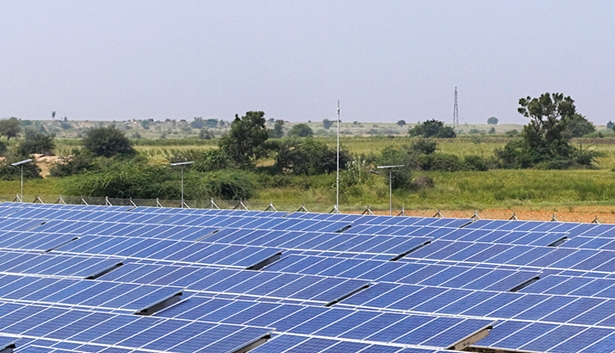Transmission schemes with an aggregate capacity of over 12 GW, meant to evacuation from upcoming renewable energy zones, are currently under implementation.
According to the Annual Report 2021 of the Union Power Ministry disseminated recently, transmission schemes with an aggregate capacity of 12.4 GW are under implementation. These schemes are meant to evacuate electricity from upcoming renewable energy zones (REZ) in seven states – Tamil Nadu, Andhra Pradesh, Karnataka, Gujarat, Maharashtra, Rajasthan and Madhya Pradesh.
Setting up of these transmission schemes was a novel approach adopted by the power ministry to start implementation of evacuation infrastructure ahead of creation of generation capacity. Empirically, it was found that since renewable energy projects (mainly solar) have low gestation period, new capacity remained stranded as there was no transmission capacity available immediately.
Out of the aforementioned 12.4 GW of transmission capacity, around 4 GW will come from intrastate projects. Apart from the capacity under execution, transmission schemes worth 16.6 GW are in the tendering stage.
This set of “anticipated” transmission schemes represents the third prong of the overall plan of setting up evacuation infrastructure for renewable energy capacity. India has set a target of setting up 175 GW of grid-connected renewable energy capacity by 2022.As of March 2021, this capacity stood at around 94 GW.
GEC-I
The process of setting up transmission infrastructure for renewable energy projects started with the Green Energy Corridor (GEC) project that was assigned to Power Grid Corporation of India Ltd. The scheme was designed to facilitate interconnection of renewable energy generation to the grid. The project aims to integrate intrastate schemes implemented by state transmission utilities as well as interstate schemes developed by PGCIL and other private developers. As there was a second phase of GEC, this phase is now known as GEC-I. Under the GEC-I project, a total of 3,200 ckm of transmission lines and six substations with total transformation capacity of 17,000 MVA have been set up.
REMCs under GEC-I
GEC-I also included establishment of 11 Renewable Energy Management Centres (REMC), by PGCIL, in renewable energy-rich states, regional load dispatch centres and the National Load Dispatch Centre. The objective of an REMC is to address variability and balancing issues in system operation due to renewable energy injection into the grid. These 11 REMCs have already been commissioned and another two REMCs (one each in Adaman and Telangana) are under implementation by PGCIL.
GEC-II
As a follow-up to GEC-I, the second phase GEC-II was envisaged to address power transmission of about 20 GW capacity coming from 34 solar parks. So far, PGCIL has set up evacuation infrastructure for seven parks aggregating 6.5 GW. The evacuation infrastructure comprises 1,870 ckm of transmission lines and five pooling stations with total capacity of around 13,500 MVA.
(Featured photograph for illustration only)



